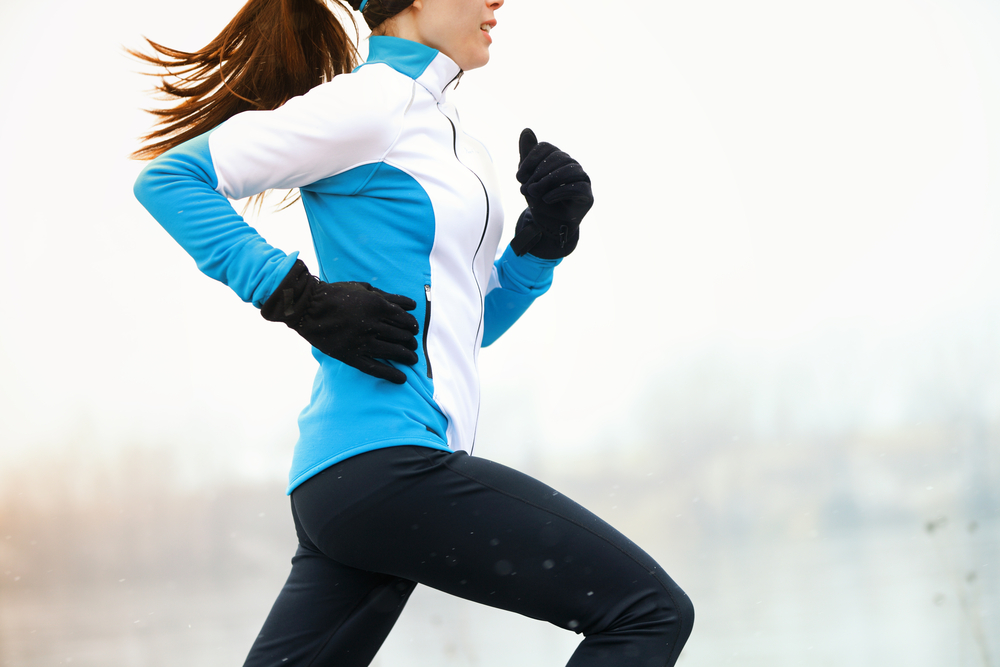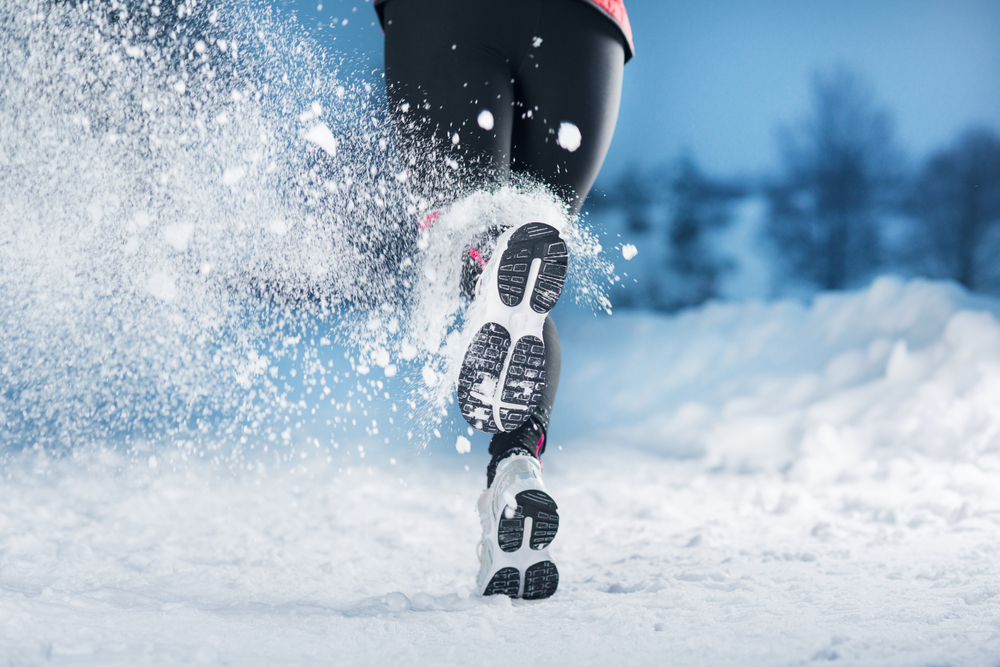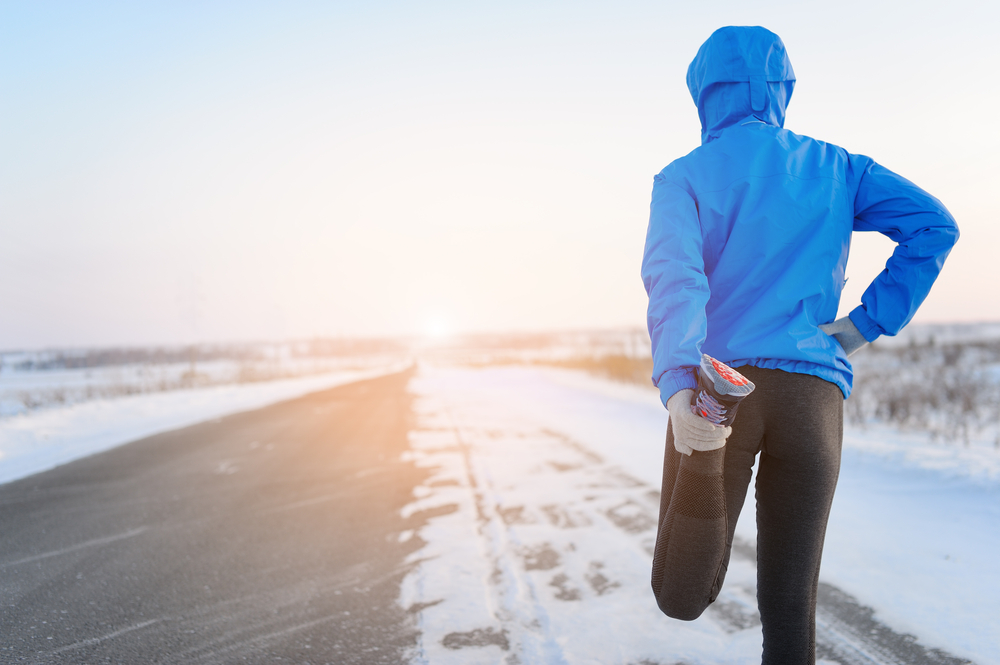Give more time for the warm up. Just as with a car, the body also takes longer to warm up in winter. A cold start can result in injury, since training without an adequate warm-up can lead to shock in muscles, tendons, ligaments and joints. That is why you should attach much importance to your warm up.
Invest in winter training gear. The fact that winter training requires warm clothing should be self-evident. Nevertheless, it is easy to underestimate temperatures, especially when you’ve spent the day indoors ahead of your training, or if the wind picks up when you are out. Dressing for the cold is best done according to the well-known “onion principle”, which suggests you dress in easy-to-remove layers to allow for changes in body temperature. Be sure to wear enough layers and that the extremities are covered since they radiate a large amount of heat. Prepare beforehand by choosing shoes with a good profile to handle smooth and black ice. Wear sunglasses and strong sunscreen to protect you from strong solar radiation and reflection.
Read: Main Sport Events 2018

Keep moving. Just as important as proper preparation is the way you go about completing your training. Once you have completed your run, cool down for a few minutes before moving immediately into the warmth in order to stretch, so that your muscles do not become stiff. In winter, muscles cool down very quickly, so any by-products from contraction cannot be flushed out of the bloodstream in time. This results in painful muscle spasms and even injury if they are later “torn apart”. If you push hard at the end of your training session, make sure you don’t sit or lie down immediately after reaching exhaustion – this will cause circulation to drop very fast and your muscles will stiffen.
Train during the day. When possible, choose morning or noon to schedule your training. This time of day it is not only the warmest, but is also when the sun is best positioned to stimulate the production of Vitamin D. In winter, many people suffer a vitamin D deficiency, a vitamin which is particularly important for bones and joints and is also lifting the spirits.

Watch your breath carefully. The colder the air, the greater the stimulus to the bronchi, lungs and mucous membranes. On the one hand, the cold forces the bronchial tubes to narrow, while also reduces the capacity of mucous membranes to stay moist. The typical burning or irritation of the throat is felt when a lot of cold air is inhaled, causing a slight inflammation and a very clear sign that it is too cold to exercise in the fresh air. Pay attention to this as much as possible by inhaling through the nose and exhaling through the mouth. Breathing like this gives air a longer route to the lungs and so more time to be moistened and heated through the nasal mucosa and mouth. The airway that passes through the mouth is moistened and heated during exhalation, enabling efficient breathing through this channel when necessary. It can also be helpful to wear a breathing mask or a handkerchief over the nose and mouth, to further warm and moisten cold air during inhalation.

Read: Innovative Gyms in Kyiv
At temperatures below -15 ° Celsius, you should not exercise outside if possible. At this temperature, the body cannot sufficiently warm air before it reaches the lungs. After training, make your way as quickly as possible into the warmth and take off any wet or sweaty clothes, because directly after exposure, the immune system is particularly weak and vulnerable. Do not forget that your health always comes first.
Source: www.freeletics.com. Image source: shutterstock.com







